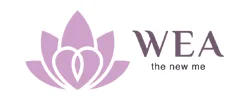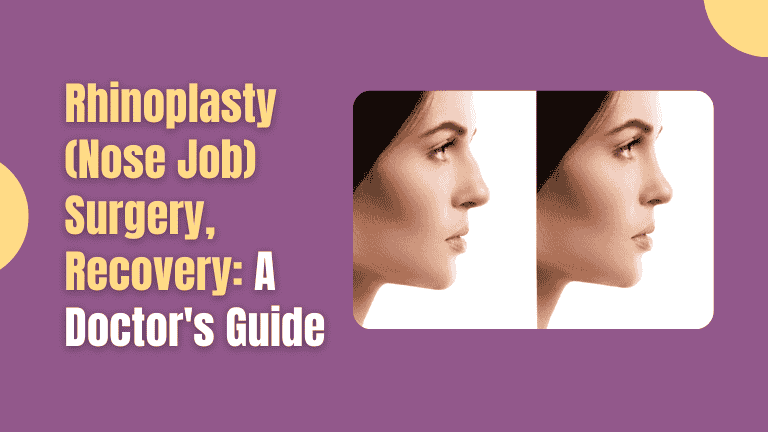Let’s talk about something very personal. The center of your face. Your nose.
Maybe you have felt for a long time that it does not quite fit with the rest of your features. Maybe you broke it years ago and it never looked the same. Or maybe you just have a little bump that you have always wished was not there. It is a feeling that a lot of people have. You are not alone in this.
The idea of changing it can be exciting. But it can also be really scary. You start searching online for “nose jobs.” And suddenly you are hit with a wall of confusing medical words, dramatic before-and-after photos, and scary stories.
You just want a straight answer. What is it really like? Does it hurt? Is it safe? And will I still look like me?
If you are looking for a simple, honest guide, you are in the right place. We are going to walk through the entire process together. No complicated jargon. Just a clear conversation about what to expect on your journey to a nose you love.
What is rhinoplasty?
Let’s start with the basics. What is rhinoplasty?
Rhinoplasty is just the medical word for nose surgery. You probably know it by its more common name: a “nose job.” But it is more than just a job. It is a very delicate mix of art and science.
Think of a sculptor working with clay. A plastic surgeon is a sculptor for the face. They are not just changing a nose. They are creating a nose that fits in perfect harmony with your eyes, your mouth, your chin. Your whole face.
The goal of a good rhinoplasty is not to give you a “perfect” nose. There is no such thing. The goal is to give you a nose that looks so natural on your face that no one would ever guess you had surgery. They will just think you look great.
It can be done for two main reasons:
- Cosmetic: This is when you want to change the appearance of your nose. Maybe you want to make it smaller, straighter, or remove a bump.
- Functional: This is when you need to fix a problem with how your nose works. Maybe you have trouble breathing because of something called a deviated septum. A rhinoplasty can fix that.
Often, it is a little bit of both.
How many types of nose surgery are there?
When you and your surgeon decide to move forward, there are two main ways they can perform the surgery. It is all about how they get access to the bone and cartilage inside your nose.
So, how many types of nose surgery are there? There are two main approaches.
- Closed Rhinoplasty: Imagine a mechanic trying to fix a car’s engine without opening the hood all the way. In a closed rhinoplasty, the surgeon makes all of the small cuts inside your nostrils. There are no visible scars on the outside at all. This is a great option for more simple changes, like smoothing out a small bump on the bridge.
- Open Rhinoplasty: Now imagine the mechanic opens the hood of the car. In an open rhinoplasty, the surgeon makes a tiny cut on the small strip of skin between your nostrils (called the columella). This allows them to lift the skin up, giving them a much clearer view of everything inside. This is the best approach for more complex work, like changing the tip of the nose or making big structural changes.
Which one is right for you? You do not have to worry about that. A good surgeon will look at your nose and your goals and choose the best and safest approach for you.
Is rhinoplasty 100% safe?
This is the most important question. Your health should always be the number one priority.
The simple answer is that rhinoplasty is a very safe surgery. But just like any surgery, it is never “100%” without any risk at all. Anytime you are having anesthesia and a surgical procedure, there are small risks.
But we can get very, very close to 100% safe. How? It comes down to two things: your surgeon and where you have the surgery.
So, is rhinoplasty 100% safe? It is an incredibly safe procedure when you do it right.
- Choose a Board-Certified Surgeon: This is the most important decision you will make. A board-certified plastic surgeon has gone through years and years of intense training specifically in this field. They know the anatomy of the face inside and out. They are true experts.
- Choose an Accredited Facility: Your surgery should be done in a proper hospital or a certified surgical center. This means they have all the right safety equipment and a trained team to take care of you.
The problems you hear about almost always happen when people try to cut corners. They might go to an unqualified person or have the surgery in an uncertified place. When you choose an expert, you are choosing safety.
What to expect before and after a nose job?
The journey of a nose job is not just the surgery day. It is a process that starts before and continues for a while after. Knowing what to expect makes the whole experience much smoother.
Before the Surgery:
- The Consultation: This is where it all begins. You will have a long chat with your surgeon. You will talk about what you like and do not like about your nose. You will talk about your goals. The surgeon will look at your nose and your whole face. This is a team effort.
- Planning: The surgeon might take photos and use computer imaging to show you what might be possible. You will talk about the surgical plan and ask all of your questions.
- Getting Ready: In the weeks before your surgery, you will be asked to stop taking certain medications (like aspirin) and to stop smoking.
After the Surgery:
- Right After: You will wake up feeling sleepy. You will have a cast or splint on your nose. You might have some packing inside your nostrils. You will not feel a lot of pain, mostly just a stuffy, congested feeling.
- The First Week: This is the main recovery week. You will have some swelling and bruising around your eyes. It looks worse than it feels. Your job is to rest and relax.
- The Big Reveal: After about a week, you will go back to the doctor to get the cast taken off. This is an exciting day. You will get the first look at your new nose. It will still be quite swollen, but you will be able to see the new shape.
How many days of recovery after rhinoplasty?
Everyone wants to know when they can get back to their normal life. The good news is, the main part of the recovery is shorter than most people think.
So, how many days recovery after rhinoplasty?
For most people, the initial “social” recovery period is about 7 to 10 days.
- The First Week: This is your “stay at home and watch movies” week. You will have your cast on, and you will have some swelling and bruising. You will not want to be out and about.
- After the Cast Comes Off (around Day 7): Once the cast is off, you will look and feel much more like yourself. Most of the bruising will have faded. You can usually go back to work or school at this point, as long as your job is not physically strenuous.
But it is important to know that this is just the first stage of recovery. Your nose will continue to heal and settle for a long time. The swelling will slowly go down over many months. You have to be patient with the process.
What are the side effects of rhinoplasty?
After any surgery, your body goes through a healing process. This process has some very normal and expected “side effects.” It is good to know what they are so you are not surprised.
So, what are the side effects of rhinoplasty?
- Swelling and Bruising: This is the most common one. You will have swelling on your nose and bruising under your eyes. It looks like you have a black eye. This is totally normal and peaks at around day two or three, then starts to fade.
- A Stuffy Nose: Your nose will feel blocked and congested for the first week or two. It is like having a bad cold. You will have to breathe through your mouth.
- Numbness: The tip of your nose might feel numb for a while. This is normal. The feeling will slowly come back over the next few months.
- Patience is a Side Effect! This is a mental one. The hardest part for many people is waiting for the swelling to go down completely. Your nose will look a little “puffy” for a while. You have to be patient and trust the process.
What’s the success rate of rhinoplasty?
This is a great question. You are making a big decision, and you want to know that it is likely to go well.
When we talk about the “success rate,” we are talking about two things. Is the surgery safe and technically correct? And is the patient happy with how it looks?
So, what’s the success rate of rhinoplasty? In the hands of a skilled, board-certified plastic surgeon, the success rate is very high.
- Patient Satisfaction: Studies show that patient satisfaction rates are typically over 90%. This is because a good surgeon spends a lot of time in the consultation making sure that you and they are on the same page. They make sure your goals are realistic.
- Revision Rate: Sometimes, a small touch-up or “revision” is needed to get the result just right. The revision rate for a good surgeon is very low, usually in the single digits.
The key to a successful outcome is communication. A successful surgery is one where the final result matches the realistic goal that you and your surgeon agreed on together.
How permanent is a nose job?
You are going through this whole process. You want to know that the result is going to last.
So, how permanent is a nose job?
The changes made to the bone and cartilage of your nose during a rhinoplasty are permanent. The bump that was removed is gone forever. The tip that was refined will stay refined.
Think of it like building a house. The surgeon rebuilds the foundation and the frame of your nose. That new structure is there to stay for the rest of your life.
But, you have to remember that your nose is a living part of you. Just like the rest of your face, it will continue to age over time. The skin might get a little thinner as you get older. But the underlying new shape that the surgeon created is permanent. It is a one-time investment for a lifetime result.
Conclusion
Choosing to have a rhinoplasty is a big decision. It is a deeply personal one. It is not about chasing some idea of perfection. It is about feeling more comfortable, more confident, and more like yourself.
The journey can seem intimidating. But it does not have to be scary. When you break it down into simple steps, it becomes a clear and manageable process. It is about finding the right expert, having an honest conversation, and trusting the healing journey.
A nose job is not just a physical change. It is an emotional one. For so many of my patients, the best part is not just what they see in the mirror. It is the freedom of not having to think about their nose anymore. They can just live their lives with a new sense of confidence.
You do not have to figure this out alone. The best first step is to just have a chat with a board-certified plastic surgeon. They can answer all of your questions and help you decide if this is the right path for you.
FAQ’s
- How long after surgery will I see the final result?
You will see the new shape of your nose as soon as the cast comes off after one week. But it will be swollen. You will see about 80% of your final result after about a month or two. But the last little bit of swelling, especially at the tip, can take up to a full year to completely disappear.
- Will a nose job hurt?
The surgery itself is done under anesthesia, so you will not feel anything. During recovery, most people are surprised by how little pain there is. It is more of a feeling of pressure and stuffiness, like a bad head cold, rather than sharp pain.
- Can I wear glasses after a nose job?
You will need to avoid putting any pressure on your nose for a while. This means you should not wear glasses or sunglasses that rest on the bridge of your nose for about six weeks. Your surgeon will give you specific instructions.
- How much does a rhinoplasty cost?
The cost can vary a lot. It depends on how complex the surgery is, the surgeon’s experience, and the city where you have it done. It is a significant investment. The only way to get a real, accurate number is to have a consultation with a surgeon.
- Will a nose job change my smile?
For the first few weeks after surgery, your upper lip might feel a little stiff. This can make your smile look a bit different temporarily. This is totally normal and happens because of the swelling. As the swelling goes down, your smile will return.
Also Read: Mommy Makeover Surgery: Expectations, Aftercare & Recovery Tips




